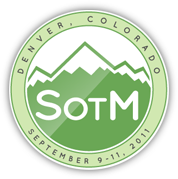Speed up your GIS server - run GIS software on solid-state drives (SSD)
Solid-State Drives (SSDs) are recently becoming popular storage mediums in laptops, and are praised for their speed and shock resistance. However, there has been some debate over whether or not SSDs are ready for the data center.
GIS software is known for its high demands on server hardware. Especially hard-drives became a bottleneck when serving map tiles, rendering map images or running spatial computations. SSDs seem to be one possibility to increase IO performance, but optimized server hardware is rare and still very expensive.
We contacted a Korean maker specialising in high-performance SSD servers, mainly used to provide video-on-demand services, and we received two of their enterprise servers for testing and benchmarking with FOSS4G software.
In this presentation we present our benchmarking results and explain the strong and weak points by comparing traditional hard-drives and solid-state disks.
By making use of FOSS4G software we test and compare different scenarios such as
- Rendering of map images
- Performance of spatial databases
- Serving of cached map tiles
Hereby we hope to contribute some additional knowledge about how to tune a GIS server and how to improve server performance for Open Source GIS software.
Daniel Kastl is founder and CEO of Georepublic UG and works in Germany and Japan. He is moderating and promoting the pgRouting community and development. He's an active OSM contributor in Japan and an initial foundation member of the Japanese local chapter.











